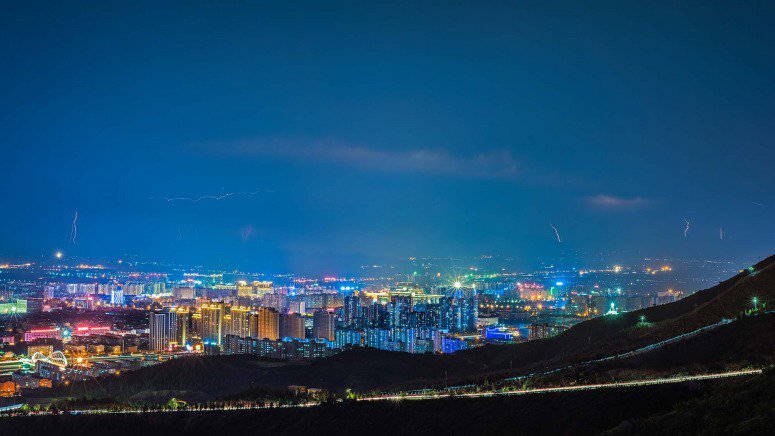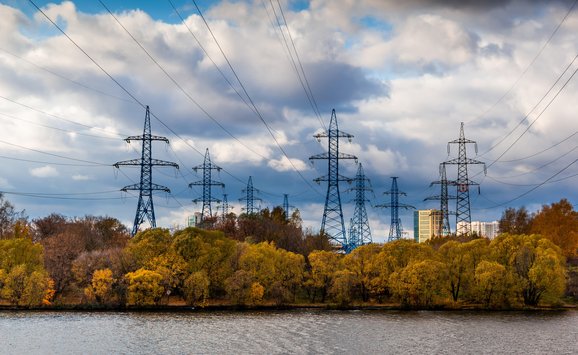China faces complex challenges to reduce air pollution while still promoting economic growth. No simple solution exists—but policy reforms to reduce excess capacity and get prices right can help in both the near and long terms.

Air pollution in China is not a new concern. In recent years, “red alerts” that signal especially poor air quality have frequently made headlines around the world. In late 2016, these alerts resulted in school and factory closures in Beijing and prompted the government to restrict the number of vehicles on the road. In December, Fortune reported that the air quality index in Beijing had climbed to 260—“more than five times what’s considered healthy”—while the index rose twice as high outside of the city. Beginning with the January 2013 “Airpocalypse,” a series of severe pollution episodes introduced the term “PM2.5” into the public lexicon, referring to particulate matter small enough to penetrate deep into the lungs and enter the bloodstream, causing cardiovascular and respiratory diseases, and even death among vulnerable populations.
At the annual National People’s Congress on March 5, Prime Minister Li Keqiang announced measures to cut coal consumption and vehicle emissions as well as punish “government officials who ignore environmental crimes,” as reported in the Guardian. The outlet noted, however, that “Li’s language was more cautious than three years ago when he used the same opening speech to ‘resolutely declare war on pollution’”—reflecting that air pollution reduction is proving much more difficult than officials originally expected.
Despite already substantial efforts to require enterprises and vehicle producers to install emissions-control equipment and promote more efficient and renewable energy sources, the inability of the Chinese government to reduce severe pollution episodes to date may indeed prompt even greater efforts by government officials. What challenges does China face in seeking to further reduce fossil fuel use—and what are the impacts of such efforts on businesses and daily life?
The fact that the severity of China’s short-term pollution spikes may not be improving at the same time that the country is achieving notable successes in reducing not only critical emissions but also concentrations of PM2.5 on an annual average basis is counterintuitive. For example, national emissions of sulfur dioxide (SO2) fell from 25.9 million tons in 2006 to 19.7 million in 2014, and emissions of nitrogen oxides (NOx) dropped from 24 million tons in 2011 to 20.8 million in 2014. These two gases react with other chemicals in the atmosphere to form sulfate and nitrate particles—key components of PM2.5. In Beijing, the annual average PM2.5 level fell 18 percent from 2013 to 2016, to 73 micrograms per cubic meter.

Left: A ship transports coal along the Yangtze River in China Right: Workers in China service one of the country's many steel mills.
There’s no simple answer to this puzzle. China’s wintertime spikes in pollution are generally initiated by unusual, transient meteorological conditions, including low wind speeds and high relative humidity. The resulting smog is formed by not only “primary” pollutants emitted directly from burning fossil fuels but also “secondary” pollutants formed chemically in the air, including sulfate and nitrate PM2.5 as well as ozone. This makes its resolution far more vexing than most outside of the scientific community recognize.
The complex confluence of chemistry and meteorology giving rise to China’s wintertime red alert events is poorly understood and an area of intense scientific research. Compounding the challenge may be an unfortunate feedback between high PM2.5 levels and atmospheric stability that prevents pollution dispersion: absorption of solar radiation by airborne haze warms the atmosphere aloft and reduces warming of the surface, trapping pollutants near ground level in a thermal inversion. Long-term meteorological data now also suggest a weakening winter monsoon in East Asia—meaning diminishing cold fronts that historically help both to clean the air with precipitation and transport it out over the Pacific. Many scientists think that climate change could be playing a role in China’s wintertime pollution episodes.
Controlling emissions from large industrial plants is often straightforward, if costly—requiring the installation and operation of equipment to scrub flue gas of SO2, NOx, and primary particulates. In the past, some enterprises have installed the required devices but operated them only sporadically to save money, sometimes with the connivance of local officials. Stricter monitoring has helped to mitigate this problem, and renewed resolve to punish officials that collude with firms is further reducing this source of pollution. Currently, such controls are required only for the largest industrial emitters; expanding coverage would improve matters with the recognition that the costs would have to be passed on to consumers.

However, many coal-burning sources are smaller enterprises or households where such technologies are impractical. In order to reduce emissions from these sources, natural gas or non-fossil electricity must be available. China is building pipelines and port facilities to import gas and trying to develop its abundant shale gas resources, but the regional and urban gas distribution infrastructure remains underdeveloped. These infrastructure projects would take years to complete but doing so would be consistent with the need to maintain growth and employment, benefiting the construction, steel, and cement sectors in particular. In the short run, however, more steel and cement translates to more pollution.
At the same time, China has expended great efforts on expanding renewable power—it now leads the world in wind, solar, and hydro power capacities. Integrating these renewable resources into the electricity system, however, has been a longstanding challenge for both transmission companies managing the grid and the government. Wind power wastage is very high, reaching 21 percent in the first half of 2016, and similar problems are now arising in China’s overbuilt and geographically concentrated hydroelectric sector. The technical challenges of integrating this variable power into an inflexible, coal-dominated system are formidable, but the political and economic challenges may be even more difficult.
Previous rounds of reform to improve energy efficiency and promote renewables have been partly obstructed by the political power of generating companies, which are mostly state-owned. Improving efficiency means reducing the output of smaller, older coal units, limiting excess capacity and increasing interprovincial electricity transmission. Local governments regard their coal plants as sources of employment and revenue, and are reluctant to reduce their output. Investors point to guarantees of a fair rate of return and resist efforts to curtail production in favor of renewables. Further reform to reduce coal-fired generation would require compensation from the public treasury, or the political will to impose losses on investors and higher prices on consumers.

Reducing emissions from motor vehicles also presents challenges at the subnational level—this is substantially a responsibility of local authorities. Emissions standards for new vehicles are primarily set by the central government, but the main prospect for improvement lies with local commitment to public transportation, traffic management, and urban planning to reduce travel demand. The infamous traffic jams of Beijing illustrate the challenges facing city governments. Beijing has six million vehicles spewing fumes while crawling along congested roads. The municipal environmental bureau has estimated that about 70 percent of the particulate matter in Beijing is due to within-city sources—with a third of that from vehicles, depending on the season.
This vehicle pollution is partly the result of earlier decisions to emphasize construction of a conventional road network over urban development designed around transit options such as light rail, subways, rapid bus lines, and cycling routes. Prompted by the 2008 Summer Olympics in Beijing, the capital’s subway system was vastly expanded but still has a long way to go to achieve the coverage and convenience of major systems in the West. City authorities now have little short-term recourse but to impose strict limits on the number of vehicles and to incentivize the purchase of electric vehicles. The success of these policies remains to be seen, but any further tightening of restrictions will mean even longer waits for vehicle licenses in Beijing and higher license prices in Shanghai—prices that stood at $12,000 (US$) in 2016. Ideas worth considering include congestion pricing and making electric vehicles more convenient to use.
A bigger political challenge further complicates this picture: reform to let markets play a larger role in the economy, including market pricing of electricity and the closure of excess industrial capacity. There is a glut of more than 100 new coal-fired power plants approved for construction despite falling utilization rates at existing plants. Some estimates of these “stranded” coal power assets exceed $500 billion. Additionally, excess steel capacity is a longstanding problem. As the Financial Times noted in February (subscription required), the much-publicized closure of steel capacity is misleading, targeting mills that have already ceased production; in 2016, “closures in operating capacity were outpaced by new plants or mills that restarted as prices rose.”
The crux of this political challenge lies in the reality that provincial governments have both an obligation and the authority to develop the economy at the local level. Many see little alternative to industry-focused economic growth and are reluctant to close down heavy industries without an assured alternative source of jobs and revenue. The polluted province of Hebei, which surrounds Beijing, is a prime example. It is relatively poor with a large industrial sector and by itself produces more steel than the United States. Emissions from the province are a major source of regional pollution affecting Beijing, but the Hebei government is resistant to closing local plants and taking the risk of an alternative development strategy.

City of Zhangjiakou in China’s Hebei Province
What can we expect as China moves forward with efforts to reduce air pollution while still promoting economic growth? Reforms to shift the Chinese economy from heavy industry to services are a priority for the government. If successful, these reforms will also reduce pollution. The time scale for this, however, may be too long for a public both acutely aware of and worried about the health impacts of air pollution.
Accelerating economic transformation will require more imaginative thinking about tax and transfer policies. Taxes as a share of GDP are much lower than those in more advanced economies of the world. A more active role by the central government to help the poorer provinces move away from a reliance on dirty industries may require more money to be transferred to provincial governments. Both local and international development economists have noted how the residency requirements (the hukou system) make it difficult for people to migrate to areas with better economic opportunities. Expedited reform of this system would ease this desired economic transformation.
Policy options that would have more immediate effects do exist. Economists have long been advocating that prices for goods and services be set to reflect the full costs of bringing them to market—including the costs of environmental damages that result from production, transportation, and distribution. Measures to help correct incentives that encourage the overuse of resources—including reforming prices for electricity, fuel, water, and access to roads—would be a good place to start. Major proposals since 2015 to reform electricity pricing might finally engender a long-overdue breakthrough in this regard; the challenge is to implement them successfully by satisfying the powerful state-owned actors likely to lose from the reform process.
In the face of such challenges, it will likely take the authority of China’s top leaders to implement economic reforms to achieve a more rational investment and pricing system. They should be motivated by recognition that these reforms will not only strengthen the basis for sustained economic growth but also build efficient environmental protection into the economic system.








